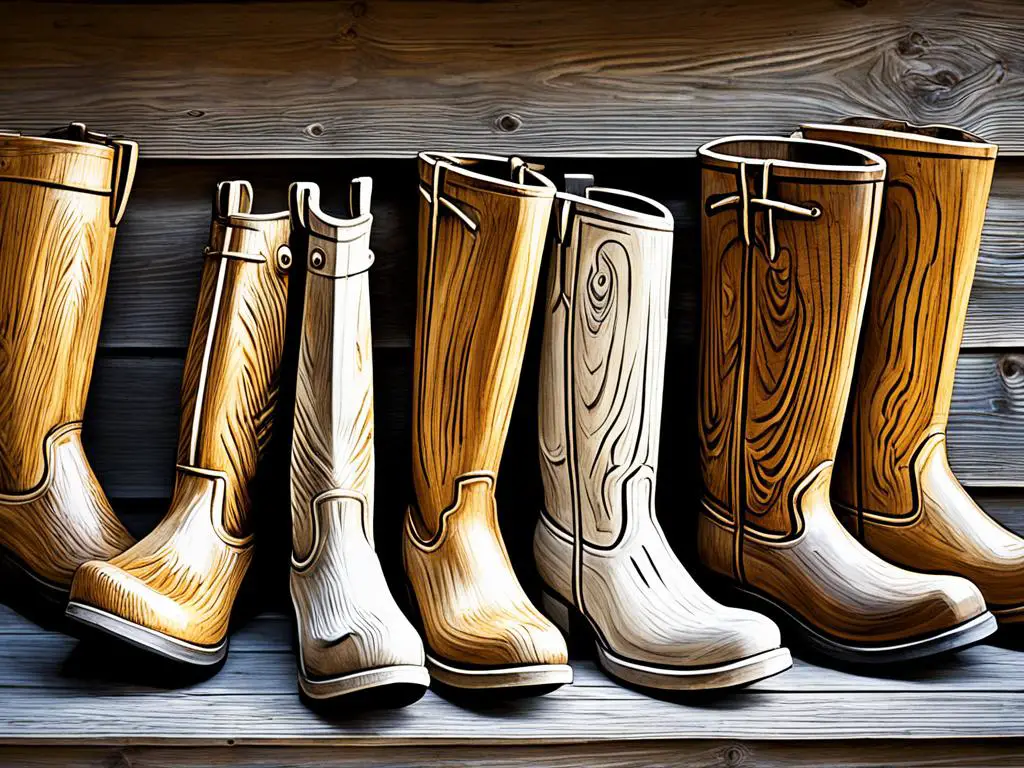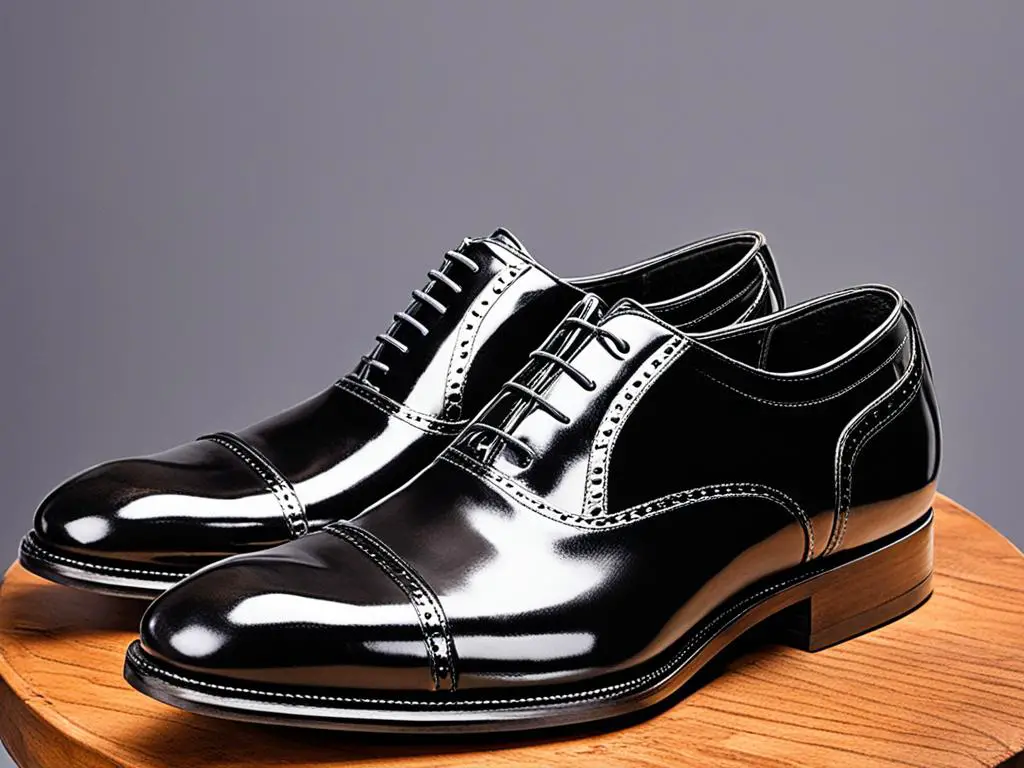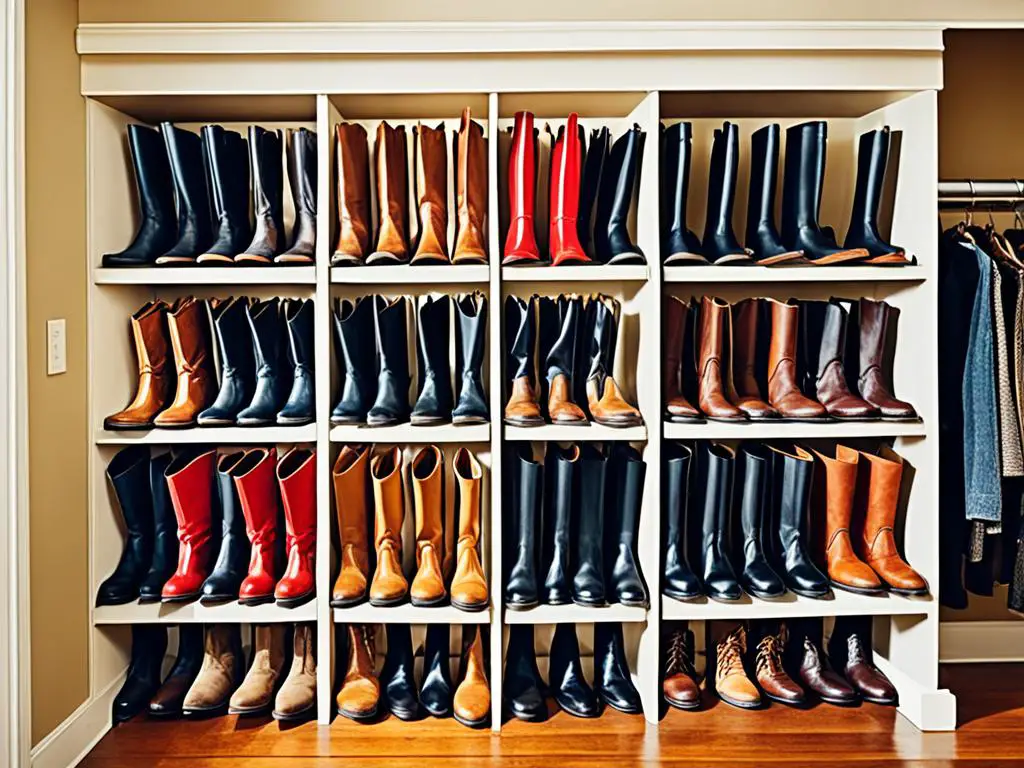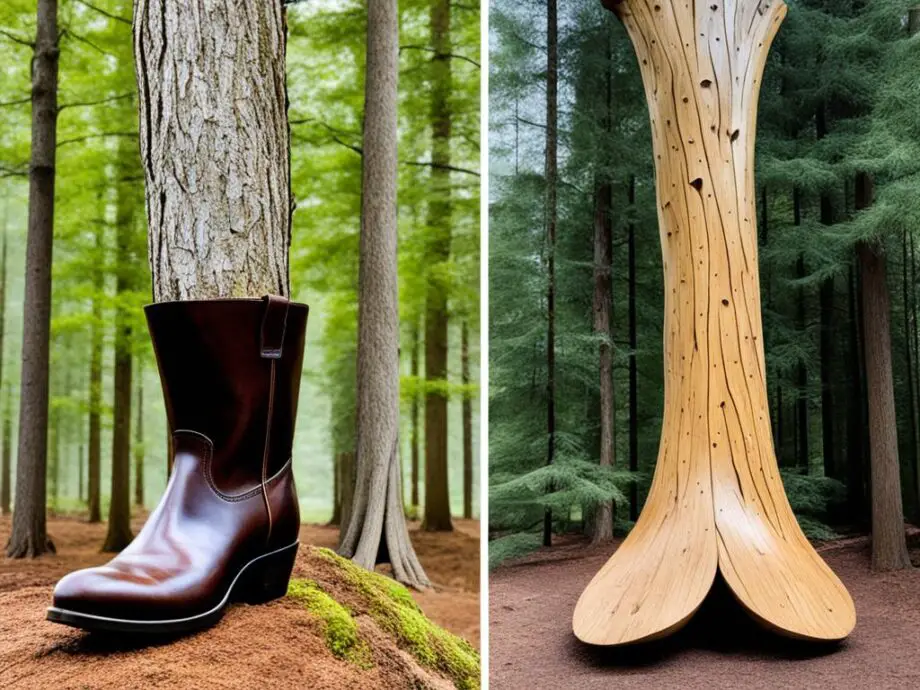Welcome to our guide on boot trees vs shoe trees. When it comes to taking care of your footwear, choosing the right accessory is crucial. In this article, we will explore the differences between boot trees and shoe trees and help you make an informed decision for preserving the shape and longevity of your favorite shoes.
Key Takeaways:
- Understanding the differences between boot trees and shoe trees is essential for proper footwear care.
- There are specific boot trees designed to maintain the shape of leather boots, ensuring their longevity.
- Shoe trees offer numerous benefits, including preventing creasing and absorbing moisture.
- Using shoe trees correctly can help preserve the shape and appearance of men’s dress shoes.
- Choosing the right boot trees is important for different types of boots, such as riding boots that require additional support.
Understanding Boot Trees and Shoe Trees
In this section, we will provide an overview of boot trees and shoe trees, two essential accessories for preserving the shape and condition of your footwear. Boot trees are typically made from wood, while shoe trees are commonly crafted from plastic. Let’s explore the unique features and benefits of each type.
The Charm of Wooden Boot Trees

Wooden boot trees are renowned for their durability and natural ability to absorb moisture. When inserted into boots, they help maintain the original shape, prevent creasing, and improve airflow. The sturdy construction of wooden boot trees ensures optimal support for the boots, especially tall or riding boots that require additional structure and care.
Wooden boot trees, with their classic appeal and functional benefits, are ideal for enthusiasts who value longevity and authenticity in their footwear collection.
The Convenience of Plastic Shoe Trees
Plastic shoe trees offer lightweight and cost-effective alternatives to wooden boot trees. They are versatile, practical, and easy to use. Plastic shoe trees are known for their ability to maintain shoe shape, prevent wrinkles and creases, and allow efficient drying after daily wear or exposure to moisture. They are suitable for a wide range of shoe types, including casual sneakers, dress shoes, or even athletic footwear.
Plastic shoe trees provide convenient and affordable shoe care solutions for those looking to preserve the shape and extend the lifespan of their favorite shoes.
In the next section, we will explore in detail the benefits of using shoe trees, regardless of the material. We will address common concerns and provide step-by-step instructions on how to maximize the benefits of these essential accessories.
The Benefits of Using Shoe Trees
Using shoe trees is not only a great way to maintain the shape and structure of your shoes but also to prevent creasing and absorb moisture. Let’s explore the numerous benefits of incorporating shoe trees into your shoe care routine, along with step-by-step instructions on how to use them effectively.
1. Maintaining Shoe Shape
One of the primary benefits of using shoe trees is their ability to maintain the shape of your shoes. When you wear shoes, they can stretch and deform due to regular use and pressure. By inserting shoe trees into your shoes post-use, you can help them retain their original shape and ensure a proper fit every time you wear them.
2. Preventing Creasing
Creasing is a common issue that affects the appearance and longevity of shoes, especially in areas like the toe box and vamp. Shoe trees help combat creasing by gently stretching the leather and preventing folds and wrinkles from forming. This not only keeps your shoes looking polished but also helps extend their lifespan.
3. Absorbing Moisture
Moisture from perspiration or wet weather conditions can lead to unpleasant odors and damage to your shoes. Shoe trees made from materials like cedar not only help absorb excess moisture but also impart a fresh, natural scent to your shoes, keeping them dry and odor-free.
How to Use Shoe Trees
- After you’ve worn your shoes, gently remove the footbed or insole.
- Insert the shoe tree into the shoe, making sure it fits snugly from heel to toe.
- For men’s dress shoes, ensure that the toe of the shoe tree aligns with the toe box.
- Adjust the tension of the shoe tree as needed to provide gentle pressure on the shoe and maintain its shape.
- Leave the shoe trees in your shoes for at least 24 hours to allow them to work their magic.
- Repeat this process after each use to maximize the benefits of using shoe trees.
By following these simple steps, you can effectively use shoe trees and enjoy all the benefits they offer for maintaining the shape, preventing creasing, and absorbing moisture from your beloved shoes.

Now that we’ve explored the benefits and usage of shoe trees, let’s turn our attention to shoe trees specifically designed for men’s dress shoes. These shoe trees are crafted to cater to the specific needs and styles of men’s formal footwear, ensuring the best possible care and maintenance.
Choosing the Right Boot Trees
When it comes to maintaining the shape and longevity of your boots, choosing the right boot trees is essential. In this section, we will provide you with valuable tips on selecting the perfect boot trees for your specific needs. We will also share some storage tips to ensure that your boot trees remain effective in preserving your boots’ shape over time. Furthermore, we will discuss the importance of investing in boot trees specifically designed for riding boots, which require additional support and care.
The Importance of Proper Boot Tree Selection
When selecting boot trees, it’s crucial to consider their material, size, and shape. Wooden boot trees are often preferred due to their ability to absorb moisture and maintain the natural shape of your boots. Plastic boot trees can also be a viable option, as they are lightweight and cost-effective. Whichever material you choose, make sure that the boot trees have a snug fit and fill the boot’s shaft completely.
For riding boots, it’s essential to choose boot trees specifically designed to provide optimal support and maintain the shape of the boots despite the constant movement and pressure they endure. These boot trees are usually crafted with sturdy materials and may have additional features such as adjustable calf supports or height extenders.
Storage Tips for Boot Trees
Proper storage of your boot trees is crucial to ensure their long-lasting effectiveness. Here are some storage tips to keep in mind:
- Store boot trees in a cool, dry place away from direct sunlight to prevent warping or cracking.
- When not in use, keep your boot trees inserted in your boots to maintain their shape.
- Avoid placing heavy objects on top of your stored boots to prevent deformation.
- Consider using boot tree storage bags or boxes to protect them from dust and moisture.
- Regularly inspect your boot trees for any signs of wear or damage and replace them if necessary.
By following these storage tips, you can ensure that your boot trees remain in excellent condition and continue to effectively preserve the shape of your boots for years to come.

Choosing the Right Boot Trees – Summary Table
| Boot Tree Material | Advantages | Disadvantages |
|---|---|---|
| Wooden Boot Trees | 1. Absorb moisture 2. Maintain natural shape 3. Durable |
1. Higher cost 2. Require periodic treatment |
| Plastic Boot Trees | 1. Lightweight 2. Cost-effective 3. Easy to clean |
1. May not absorb moisture 2. Less durable than wood |
| Riding Boot Trees | 1. Provide optimal support 2. Maintain shape despite movement 3. Adjustable calf supports |
1. Can be more expensive 2. Limited usage for specific boot type |
Note: The advantages and disadvantages provided in the table serve as a general guide. Individual boot tree models may vary in their features and functionality.
Conclusion
In conclusion, maintaining the shape and longevity of your footwear is crucial for both comfort and style. By using boot trees or shoe trees, you can ensure that your favorite boots and shoes retain their form and stay in excellent condition.
Whether you prefer the classic elegance of wooden boot trees or the convenience of plastic shoe trees, these accessories offer numerous benefits. They prevent creasing, maintain shoe shape, and absorb excess moisture, keeping your footwear looking and feeling their best.
Remember to use shoe trees regularly and follow proper usage instructions to maximize their effectiveness. Additionally, make sure to choose boot trees that are designed specifically for riding boots if you own a pair. Proper boot tree selection and storage techniques will contribute to preserving the structure of your riding boots for years to come.
In summary, investing in boot trees or shoe trees is a small but significant step in prolonging the life of your footwear. By incorporating these accessories into your shoe care routine, you can enjoy well-maintained shoes that not only look great but also provide lasting comfort and support.
